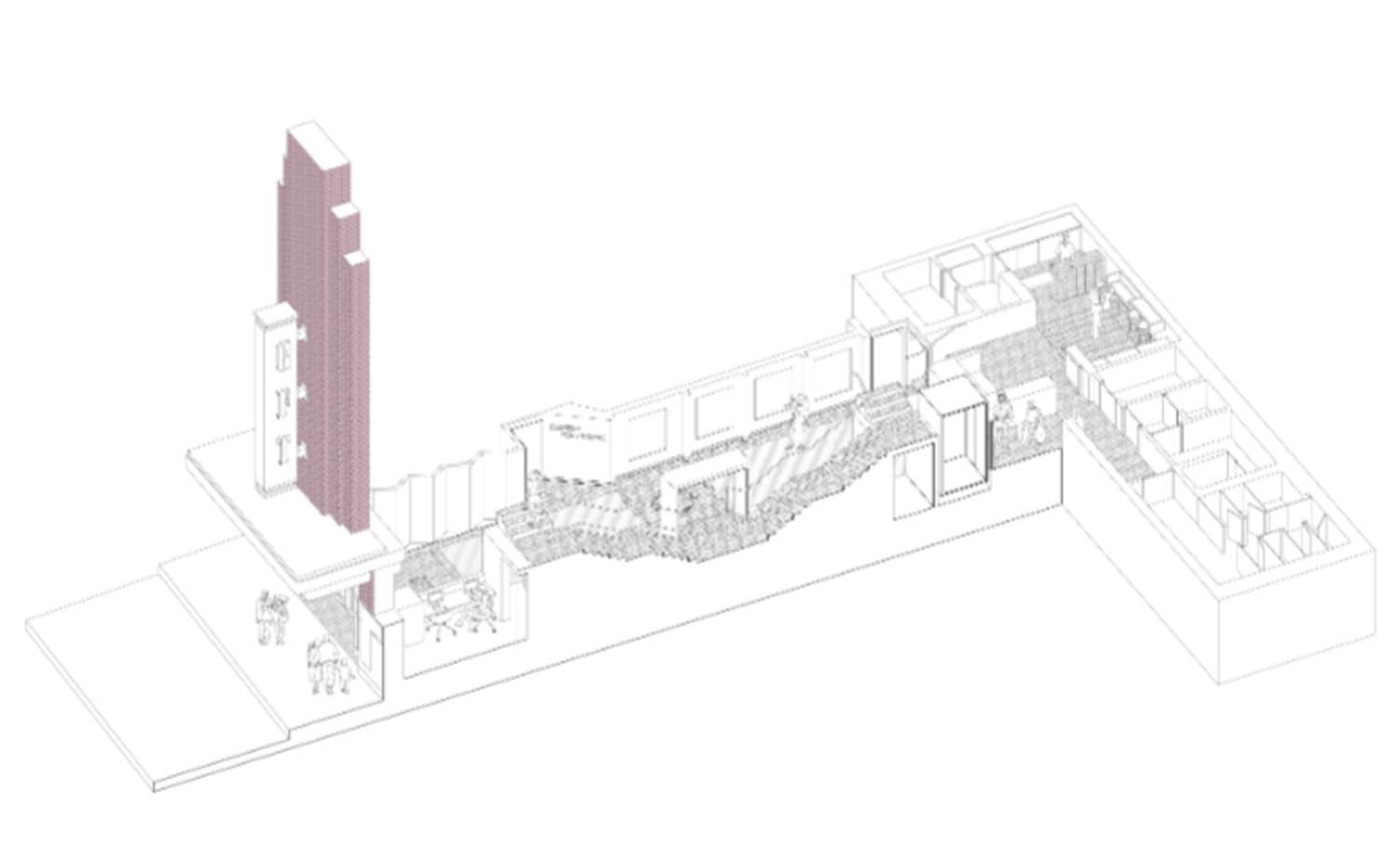Creating uplifting interiors for Glasgow Film Theatre

Climate change is one of the biggest issues facing Scotland and the world today. The materials we choose and how we design our buildings have a significant impact on responding to a changing climate and helps us reduce carbon emissions. This is explored in the Best Use of Timber Awards Exhibition in early 2020. We spoke to Brian McGinlay, of McGinlay Bell, on the process of creating a new and accessible space for the city at Glasgow Film Theatre.
Why Timber?
The Glasgow Film Theatre has always had a rich history of expressive interiors. Since opening in 1939 the interior has acquired heritage value for creative timber applications. For us, in taking clues from the cinema’s heritage, our chosen palette of materials was very much inspired by the original designs.
Timber seemed appropriate but, as a place of leisure and entertainment, we also recognised that wood, and timber environments, have uplifting qualities and offer positive effects on our wellbeing.
Quality, robustness and a sense of timelessness
Architecturally, the principal aspirations for the project was to sensitively insert new programme whilst re-instating new interior elements and surfaces that made visual reference to the cinema’s former glory.
Our Client’s brief wished for quality but equally good levels of robustness and a sense of timelessness. Key to the making of the interiors was the craftmanship produced by the workshop of specialist contractor Thomas Johnstone.
Local wood manufacturing expertise allowed us to develop workshop precision and controlled craftsmanship. Innovative methods of jointing and off-site fabrication allowed for greater control and quality.
Purpose-made wood interior
For us we see the project as a walkthrough project defined and expressed by timber detailing whether by sliding doors, counters or concealed cupboards all in which embrace the design ideals and visions of bespoke shopfitting carpentry.
The project now offers a new purposed-made wood interior crafted with great attention to details offering a new sense of permeance.
What was your favourite part of the Glasgow Film Theatre project process?
McGinlay Bell believes that great buildings, places and interiors are fundamentally inspired by passionately driven clients. The Chief Executive of The Glasgow Film Theatre, Jaki McDougall, is quite simply a visionary client. An extremely passionate, creative and well-focused individual whose significant contribution and energy have now delivered the two-phased refurbishment project over the past eight years.
Passionate and hands-on client
Jaki’s aspirations for the redevelopment were clear from the outset. My fond memories of Jaki turning up at the office with her scrapbook of images referencing modern boutique European art-house cinemas.
We had many in-depth discussions of the GFT’s heritage, and its 1939 grandeur but with a strong focus on Jaki’s passion to embrace modern technology. We were inspired on moving the GFT experience, its educational outreach and its film festival programme forward for future Scottish and International audiences, while designing spaces fitting for the next generation.
From start to finish, Jaki figure-headed all discussions from principle design sessions, progress meetings, attending material and component mock-ups and enjoyed the collaboration – a very much hands on client!
What is your favourite aspect of the finished project?
As a practice, we like rooms. In Adolf Loos essay, ‘The principles of cladding’, he writes: ‘Architecture comes from the making of a room’. He emphasises that the chief concern of the architect is with the room and its surfaces.
Loos believed that what is beautiful must also be useful. His interiors were highly complex spatially and made by luxurious use of natural materials. Inspired by these thinkings, we were fascinated by these notions of the makings of a room – the contained space or volume, adjoining similar spaces and the atmosphere of a space.
Transformation or familiarity
As a much loved and treasured landmark in the city, the refurbishment was always going to be a sensitive and challenging project to tackle. We questioned how the building and interiors could be transformed and reinterpreted while creating familiarity, variety for all, accessibility for all, and principally to establish a new generational project, space and better place for people.
The design created a series of layered spatial sequences by walking through, containing or overlooking. These spaces, created from a carefully selected and researched palette of materials (terrazzo, timber and brass), established an inherent sense of quality, luxuriously comfortable and a new uplifting set of interiors.
'New room in the city'
The essence of the project cues to tackle ‘Access for All’ improving accessibility, circulation and wayfinding throughout the building. Spatially, however, the project focuses on the creation of a new foyer or ‘new room in the city’. It generates a distinctive operational space, to organise and direct filmgoers around the building but equally offers a flexible space out with the auditoriums for users to meet, gather and relax.
The most formal element of the works, and probably our favourite, is the formation of a new stairway leading up to the upper balcony and the main Cinema 1 screen. As a central piece of drama or ‘theatre’ to the project, the proposal re-introduces and re-interprets the cinema’s original 1930s butterfly staircase.
Can you say something about the commissioning or procurement process?
To enable the project to be financially resourced, a prior condition was that the cinema must remain partially operational. The complete closure of the building was considered within early appraisals. However, the forecasted cost of doing so was greater than the burden of daily building handovers.
Having the cinema partially operational was an important client condition to prevent the works from impacting cash reserves, ensure that existing customers did not fall out of the habit of attending and provide a sense of ownership of the development.
The programming of the construction period was critical to ensure that the limited screening time during the construction coincided with the lower attendance periods (May to October) thus mitigating the financial burden to the client. This opportunity presented the design team with the task of co-ordinating construction around this period of time.
Two-stage Process
The project adopted a traditional form of contract. To mitigate potential delays early appointment of a contractor was considered through a two-stage tender procurement. This form of tender procurement brought advantages over single-stage tender, as it would enable tenders to be prepared in sufficient time to preserve the proposed site start date.
Often changes on site are a result of the unmitigated risks or unknowns contained within the risk register that fail to be discharged before commencement on site. An advantage for us adopting this procurement method was the early appointment of Thomas Johnston Ltd. They were able to carry out intrusive surveys instructed by the design team to form these residual risks.
In going through each of the design packages the contractor also had the opportunity to flag any potential risks unidentified by the project team and propose alternative solutions either for phasing, methodology or construction phasing.
A well received outcome
Despite some delays, which is common when working in existing buildings, the result is an extremely well-finished building exceeding the expectations and functional needs of the client. The phased development has enabled the project to be delivered with a reduced impact on the client’s public programme and offered greater flexibility within the constraints of their existing building.
The Glasgow Film Theatre project has been extremely well received by public audiences and was recently awarded the Scottish Design Awards Architecture Grand Prix Award.
Header image credit: McGinlayBell Architects
